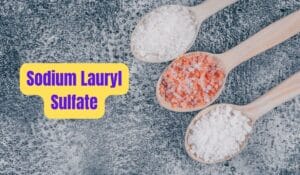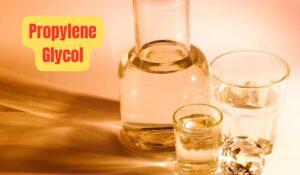10 Harmful Ingredients in Toothpaste, when it comes to maintaining good oral hygiene, toothpaste plays a key role in keeping our teeth clean and our smiles bright. However, many mainstream toothpastes contain ingredients that, over time, can pose potential risks to both your oral and overall health.
From irritating chemicals to questionable additives, some common ingredients in toothpaste may lead to mouth sores, hormone disruption, or even long-term health complications. Understanding what’s in your toothpaste and choosing safer alternatives can help you make informed decisions for a healthier, more natural dental care routine. In this guide, we’ll explore some of the most harmful ingredients in toothpaste and offer tips on how to select a safer, more effective option for your teeth.
Toothpastes sold in the USA may contain several ingredients that can be potentially harmful if used excessively or over time. Some of these ingredients are common in many mainstream dental care products, but they can have negative effects on your oral health or general well-being. Here are some of the most concerning ingredients found in toothpaste:
1. Sodium Lauryl Sulfate (SLS)

- Health Risks: SLS is a surfactant and foaming agent that can irritate the skin, eyes, and mucous membranes. It can cause mouth sores, dry mouth, and gum irritation, especially for individuals with sensitive skin or those prone to canker sores.
- Why it’s used: It helps toothpaste foam and spread more easily during brushing.
- Alternatives: Toothpastes labeled as “SLS-free” are available for those who experience irritation.
2. Triclosan
- Health Risks: Triclosan is an antibacterial agent that has been linked to hormone disruption, antibiotic resistance, and potential liver toxicity. Some studies have also raised concerns about its effect on the development of antibiotic-resistant bacteria.
- Why it’s used: It’s included for its antibacterial properties to help prevent gingivitis and control plaque.
- Alternatives: Many toothpaste brands now offer triclosan-free formulas.
3. Fluoride (Excessive Amounts)
- Health Risks: While fluoride in small amounts helps prevent tooth decay, excessive exposure can lead to dental fluorosis (discoloration of teeth) or even systemic toxicity in severe cases. This is particularly a concern for children who might swallow toothpaste.
- Why it’s used: Fluoride helps strengthen tooth enamel and prevents cavities.
- Alternatives: Non-fluoride toothpaste options are available for those who wish to avoid fluoride, though they may be less effective in cavity prevention.
4. Propylene Glycol

- Health Risks: Propylene glycol is a synthetic liquid that can cause skin and eye irritation. It is also a potential allergen, and there are concerns about its long-term effects on the liver and kidneys if ingested in large quantities.
- Why it’s used: It is a humectant used to retain moisture and prevent the toothpaste from drying out.
- Alternatives: Natural or organic toothpastes often avoid using propylene glycol.
5. Artificial Sweeteners (e.g. Sorbitol, Saccharin, Aspartame)
- Health Risks: Some artificial sweeteners, like aspartame, have been linked to headaches, allergic reactions, and potential cancer risks, although studies on their long-term safety are still debated. Sorbitol can cause digestive upset and diarrhea in some individuals when ingested in large amounts.
- Why it’s used: Sweeteners are used to make toothpaste more palatable and improve the flavor.
- Alternatives: Natural sweeteners like xylitol are sometimes used in “natural” or “organic” toothpaste.
6. Silica (Hydrated Silica)
- Health Risks: While generally safe in small amounts, there are concerns about the abrasive properties of silica. If it’s too coarse, it can damage enamel over time, especially in overly abrasive toothpastes.
- Why it’s used: Silica serves as a mild abrasive that helps to scrub and clean the teeth.
- Alternatives: Non-abrasive formulations are available for those concerned about enamel wear.
7. Sodium Saccharin
- Health Risks: Saccharin, an artificial sweetener, has been controversial due to past studies linking it to bladder cancer in lab animals. However, subsequent research has cleared it of any significant human health risks, and it is generally considered safe by regulatory bodies.
- Why it’s used: To add sweetness without calories.
- Alternatives: Toothpastes with natural sweeteners such as stevia are available.
8. Parabens
- Health Risks: Parabens are preservatives used to extend shelf life but are known to mimic estrogen in the body, which could disrupt hormone regulation. Long-term exposure may be linked to increased risks of breast cancer and reproductive issues.
- Why it’s used: Parabens are included in many personal care products, including toothpaste, to prevent bacterial and fungal growth.
- Alternatives: Paraben-free toothpastes are widely available in health-conscious brands.
9. Titanium Dioxide
- Health Risks: Titanium dioxide is used as a whitening agent in many toothpastes, but concerns about its safety have emerged. In its nanoparticle form, titanium dioxide may pose risks when inhaled or ingested in large amounts, with potential links to cancer or toxicity.
- Why it’s used: It helps to make toothpaste appear white and enhances its visual appeal.
- Alternatives: Some natural toothpaste brands avoid the use of titanium dioxide, opting for more natural whitening agents.
10. PEG (Polyethylene Glycol)
- Health Risks: PEG compounds are used in toothpaste for their ability to enhance consistency and emulsify ingredients. However, some PEG compounds can cause irritation to the skin, mouth, or eyes. Long-term exposure may also cause issues with the kidneys and liver in rare cases.
- Why it’s used: It helps to create a smooth, even texture in toothpaste.
- Alternatives: Some natural brands offer PEG-free formulations.
How to Choose a Safer Toothpaste
- Look for natural or organic options: These are often free of many harmful ingredients like SLS, parabens, and artificial sweeteners.
- Consider fluoride-free toothpaste if you have concerns about fluoride.
- Avoid synthetic preservatives and artificial additives: Many “clean” or “green” brands focus on using safer, natural alternatives.
Conclusion of “10 Harmful Ingredients in Toothpaste: What to Avoid for Better Oral and Overall Health”
Choosing the right toothpaste is more than just about fresh breath and a bright smile. It’s important to be aware of the harmful ingredients that can negatively impact your oral health and overall well-being. From irritants like Sodium Lauryl Sulfate (SLS) to potential toxins such as Triclosan and Titanium Dioxide, many common additives in toothpaste may pose risks, especially with long-term use.
By reading labels carefully and opting for natural or organic toothpaste options, you can avoid harmful chemicals and choose products that are gentler on your mouth and your body. Prioritizing safer, more natural ingredients not only helps protect your teeth but also promotes better overall health. Always remember, when it comes to your health, knowledge and informed choices are key.
By reading labels and choosing toothpastes with fewer chemical additives, you can help ensure a safer, healthier option for your dental care routine.
Read More Here:

